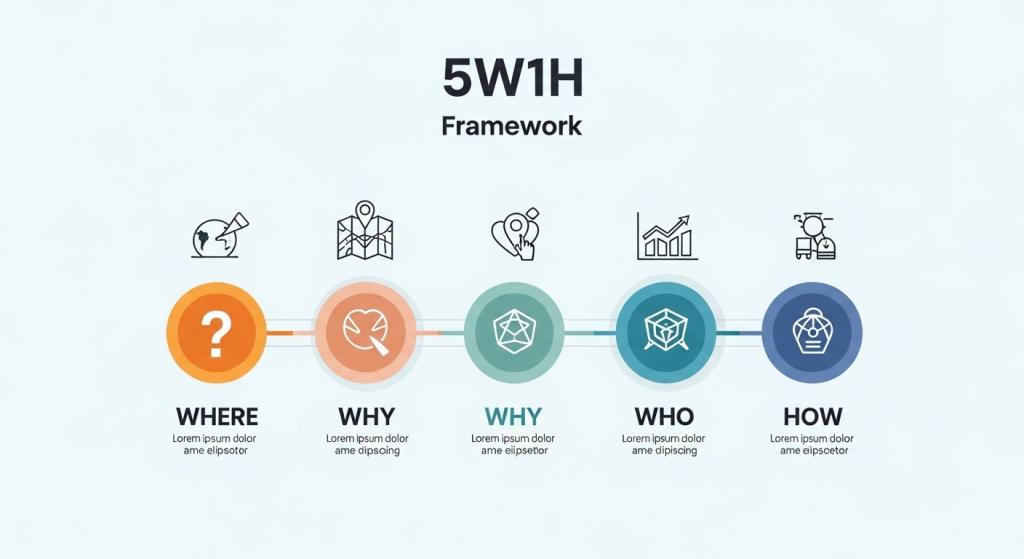Content creation mastery begins with understanding a fundamental truth: readers don’t just consume information – they seek experiences, solutions, and connections. Creating content that truly resonates requires psychology-based strategies that transform casual browsers into devoted followers. In today’s saturated digital landscape, your blog posts compete with millions of others for precious attention spans that average just 8 seconds.

What Makes Content creation Irresistible? The Foundation of Reader Engagement
What exactly transforms ordinary blog posts into magnetic content? The answer lies in understanding that readers don’t just consume information – they seek experiences, solutions, and connections. Successful content creators recognize that every piece of writing serves as a bridge between the reader’s current state and their desired outcome.
Research from the Content Marketing Institute reveals that 70% of readers abandon articles within the first 15 seconds if they don’t immediately see value. This statistic underscores a critical truth: your content creation must deliver immediate gratification while promising long-term benefits.
The most compelling content creation addresses three fundamental human needs: the need to learn something new, the need to feel understood, and the need to take action. When your writing satisfies these needs simultaneously, you create what psychologists call a “flow state” – that magical zone where readers lose track of time because they’re completely absorbed in your content.
Consider how top-performing blogs achieve this. They don’t just inform; they transform. They take complex ideas and make them accessible, controversial topics and make them approachable, and abstract concepts and make them actionable. Content creation this transformation happens through strategic use of storytelling, data integration, and emotional triggers.
Who Benefits from Mastering These Techniques?
Who stands to gain the most from understanding reader psychology? The answer extends far beyond professional bloggers and content creation marketers. Small business owners seeking to establish thought leadership, entrepreneurs building personal brands, professionals advancing their careers, and even individuals sharing their passions can leverage these principles.
Take Sarah, a freelance graphic designer who struggled to attract clients through her portfolio alone. After implementing strategic content creation techniques, her blog became a lead generation machine, attracting high-paying clients who found her through valuable design tutorials and industry insights. Her secret wasn’t just showcasing her work – it was demonstrating her expertise through helpful, engaging content creation.
Similarly, Marcus, a financial advisor, transformed his practice by making content creation that demystified complex investment strategies. Instead of using jargon-heavy explanations, he crafted relatable scenarios and used analogies that made financial planning accessible to everyday investors. His client base grew by 300% within 18 months.
These success stories share common elements: they identified their audience’s pain points, created solutions-focused content, and maintained consistent engagement through strategic writing techniques.
Where Should You Apply These Strategies?
Where can these content creation principles make the biggest impact? The applications extend across multiple platforms and mediums, each requiring slight adaptations of core principles.
Blog posts remain the cornerstone of content creation marketing, offering the space and format necessary for in-depth exploration of topics. However, the same principles apply to social media captions, email newsletters, video scripts, and even podcast outlines. The key is adapting your approach to match platform-specific expectations while maintaining consistent messaging.
LinkedIn articles benefit from professional tone and industry-specific insights, while Instagram captions thrive on personal storytelling and visual metaphors. Medium articles succeed when they blend personal experience with universal truths, and email newsletters perform best when they feel like intimate conversations with trusted friends.
Geographic considerations also matter. Content that resonates in urban markets might require different approaches for rural audiences. Cultural sensitivity and local references can significantly impact engagement rates across different regions.
When to Implement Different Engagement Strategies
When should you deploy specific techniques for maximum impact? Timing plays a crucial role in content creation effectiveness, both in terms of publication schedules and strategic placement within your content calendar.
The opening moments of reader interaction are critical. Research shows that readers form judgments about content quality within 50 milliseconds of exposure. This means your headline, opening sentence, and visual presentation must work in perfect harmony to create positive first impressions.
During the introduction phase, you have approximately 15 seconds to prove your content’s worth. This window requires immediate value delivery – whether through surprising statistics, provocative questions, or relatable scenarios that mirror your reader’s current situation.
The middle section of your content serves as the proving ground where you must maintain momentum while delivering promised value. This is where strategic use of subheadings, bullet points, and transitional phrases becomes essential for maintaining reader engagement.
Conclusion timing is equally important. Rather than simply summarizing key points, effective conclusions create urgency around implementation and provide clear next steps. They transform passive readers into active participants in your content creation ecosystem.

Why These Techniques Work: The Psychology Behind Engagement
Why do these strategies consistently produce results? The answer lies in fundamental human psychology and cognitive science. Our brains are wired to seek patterns, crave stories, and respond to emotional triggers – all elements that effective content creation exploits.
The principle of reciprocity suggests that when you provide genuine value upfront, readers feel psychologically obligated to engage further. This might manifest as comments, shares, or following your call-to-action. The key is ensuring your value delivery exceeds expectations without requiring immediate payment or commitment.
Social proof drives much of our decision-making behavior. When readers see that others have benefited from your content creation – through testimonials, case studies, or engagement metrics – they’re more likely to invest time and attention. This is why incorporating reader success stories and interactive elements significantly boosts engagement rates.
The curiosity gap represents another powerful psychological trigger. By creating mild tension between what readers know and what they want to know, you maintain engagement throughout your content creation . This technique requires careful balance – too little tension creates apathy, while too much creates frustration.
Cognitive load theory explains why scannable content performs better than dense text blocks. Readers can only process limited amounts of information simultaneously, so strategic formatting, white space, and visual elements become essential for maintaining comprehension and engagement.
How to Craft Irresistible Introductions That Hook Every Reader
How do you create openings that immediately capture attention? The most effective introductions follow a proven framework that combines emotional connection with logical progression.
Start with a pattern interrupt – something unexpected that breaks through the mental noise your readers experience. This might be a counterintuitive statistic, a controversial statement, or a vivid scene that contrasts with conventional wisdom. The goal is creating a mental “record scratch” moment that demands attention.
Next, identify with your reader’s current situation. Use language that demonstrates understanding of their challenges, frustrations, or aspirations. This creates psychological alignment and establishes your credibility as someone who genuinely understands their perspective.
Bridge the gap between their current state and desired outcome. Paint a picture of what’s possible while acknowledging the obstacles they face. This creates emotional investment in your content’s promised solution.
Finally, provide a clear roadmap of what they’ll learn and why it matters. This serves as both a content creation preview and a commitment mechanism – readers who understand the value they’ll receive are more likely to stay engaged throughout your entire piece.
Example Framework:
- Hook: “Most bloggers spend 3 hours writing posts that get ignored in 3 seconds.”
- Identification: “You’ve probably felt that crushing disappointment when your carefully crafted content barely gets noticed.”
- Bridge: “But what if I told you that simple psychology-based changes could transform your engagement rates overnight?”
- Preview: “Today, we’ll explore three scientifically-backed techniques that turn casual readers into devoted followers.”
Structuring Body Content That Maintains Momentum
How do you maintain reader interest throughout lengthy content? The secret lies in creating what content strategists call “micro-commitments” – small psychological investments that compound throughout your piece.
Each section should begin with a compelling subheading that promises specific value. Rather than generic titles like “Tips for Better Writing,” use specific, benefit-focused headings like “The 15-Second Rule That Doubles Reader Retention.” This approach creates anticipation and provides clear navigation for scanners.
Within each section, use the “promise-deliver-transition” model. Start by making a specific promise about what readers will learn, deliver that value through detailed explanation and examples, then transition smoothly to the next section by creating anticipation for what’s coming next.
Incorporate various content types to maintain engagement. Dense paragraphs should be balanced with bullet points, numbered lists, quotes, and examples. This variety prevents monotony and accommodates different learning styles and reading preferences.
Use strategic storytelling to illustrate abstract concepts. Personal anecdotes, case studies, and hypothetical scenarios make complex ideas more relatable and memorable. The key is ensuring each story directly supports your main points rather than serving as tangential entertainment.
Data integration adds credibility and breaks up text-heavy sections. Statistics, research findings, and expert quotes provide social proof while giving readers concrete information they can reference and share.
Content Rhythm Strategy:
- Open with a compelling statement or question
- Support with relevant data or research
- Illustrate with a story or example
- Provide actionable insights
- Create anticipation for the next section
Creating Conclusions That Drive Action
How do you end content in ways that create lasting impact? Effective conclusions serve multiple purposes: they reinforce key messages, provide clear next steps, and create momentum for continued engagement.
Avoid simply summarizing previous points. Instead, synthesize your main ideas into a compelling call-to-action that feels natural and valuable. This might involve challenging readers to implement specific strategies, inviting them to share their experiences, or directing them to related resources.
Create urgency without being manipulative. Explain why immediate action benefits readers while acknowledging that lasting change requires sustained effort. This balance between urgency and realism builds trust while encouraging engagement.
Provide multiple engagement options to accommodate different reader preferences. Some prefer commenting and discussion, others want to share content, and many seek additional resources. Offering various next steps increases the likelihood of some form of engagement.
End with a thought-provoking question or challenge that extends beyond your content. This encourages readers to continue thinking about your topic and increases the likelihood of return visits and social sharing.
Conclusion Elements:
- Synthesis of key insights
- Clear, specific call-to-action
- Multiple engagement options
- Future-focused challenge or question
- Invitation for community participation
Advanced Techniques for Sustained Engagement
How do you create content that generates ongoing engagement rather than one-time reads? The answer involves building content ecosystems that encourage exploration and return visits.
Internal linking strategies create content webs that guide readers through related topics. Rather than generic “read more” links, use descriptive anchor text that promises specific value. This approach keeps readers within your content ecosystem while providing genuine value.
Comment engagement techniques transform casual readers into community members. Respond to comments with questions that encourage further discussion, acknowledge specific insights, and create opportunities for readers to share their own experiences.
Series creation builds anticipation for future content while encouraging repeat visits. When readers know that valuable information will be released regularly, they’re more likely to subscribe and engage consistently.
Social media integration extends your content’s reach while creating additional touchpoints for engagement. Strategic social sharing, behind-the-scenes content, and platform-specific adaptations help build communities around your content.
Engagement Multipliers:
- Strategic internal linking
- Comment community building
- Content series development
- Multi-platform content adaptation
- Reader success story integration

Measuring and Optimizing Your Results
How do you know if your content strategies are working? Success measurement goes beyond vanity metrics to focus on meaningful engagement indicators that predict long-term growth.
Time on page metrics reveal whether readers find your content valuable enough to consume fully. Pages with high engagement typically show average reading times that suggest complete consumption rather than quick scanning.
Comment quality provides insights into reader connection and understanding. Thoughtful comments, questions, and shared experiences indicate that your content resonates emotionally and intellectually.
Social sharing patterns reveal which content elements drive organic promotion. Analyzing which sections get quoted, which images get shared, and which messages get amplified helps refine your approach.
Return visitor rates indicate whether your content creates lasting value. Readers who return regularly demonstrate that your content consistently meets their needs and expectations.
Key Performance Indicators:
- Average time on page
- Comment engagement depth
- Social sharing frequency
- Return visitor percentage
- Email subscription rates
Implementation Strategy: Your Next Steps
How do you put these principles into practice immediately? Start with small, measurable changes that build momentum toward larger improvements.
Choose one technique from this guide and implement it in your next blog post. Whether it’s crafting a more compelling introduction, improving your conclusion, or incorporating storytelling elements, focus on mastering one element before adding others.
Analyze your existing content performance to identify patterns and opportunities. Which posts generated the most engagement? What elements do they share? How can you replicate those successful elements across future content?
Create a content improvement checklist that includes the techniques outlined in this guide. Use this checklist to review and refine your content before publication, ensuring consistent application of engagement principles.
Engage with your existing audience to gather feedback about their preferences and needs. Direct reader input provides invaluable insights that can guide your content strategy and topic selection.
The journey toward creating irresistible content begins with understanding that every reader interaction is an opportunity to build trust, provide value, and create lasting connections. By consistently applying these psychology-backed techniques, you’ll transform your blog from a simple information source into a powerful platform for influence and impact.
Your readers are waiting for content that speaks to their needs, challenges their thinking, and empowers their growth. The tools and techniques outlined in this guide provide the foundation for creating that transformative content experience. The question isn’t whether these strategies work – it’s how quickly you’ll implement them to start seeing results.
However, you can see in video here

